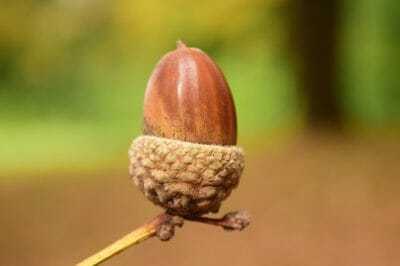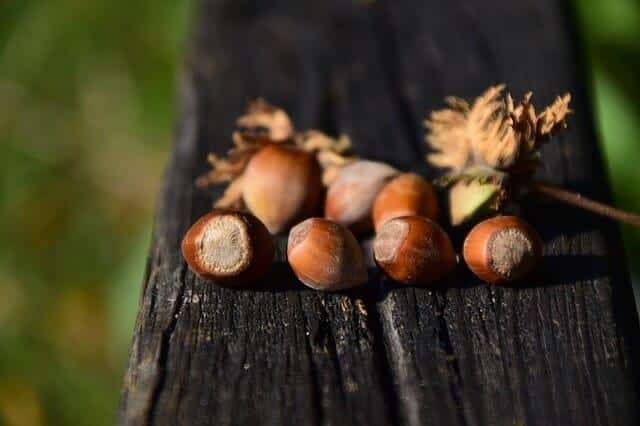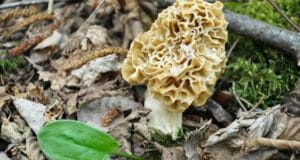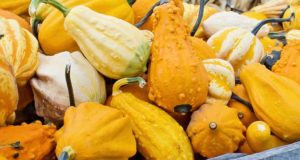If you enjoy foraging, nuts are one of the easiest ways to harvest a lot of protein in a very short time. Many other foraged foods contain mostly sugars and complex carbohydrates, which provide good fuel, but are not enough to sustain us in the long run.
Unlike meat, foraged nuts will keep at room temperature for months without deteriorating. In a survival situation, knowing which nuts are available in your area could help keep you nourished through the winter months.
1. Black walnuts
Notoriously difficult to crack, black walnuts hide a valuable prize. You can literally harvest them by the bucket full in the fall. (But wear gloves!) Start by de-hulling the nuts either by hand, or by driving over the nuts to pulp the hull off the outside. Nuts tend to hull easier when they’re a few days old, so if you can’t get them off, take a break for a few days.
Once the hull is removed, wash the nuts with a hose and pressure nozzle and allow them to dry in the sun for a few days. Black walnuts, like most nuts, store best in their shell to prevent oxidation. Keep them in a cool, dark place or if you have the space, they can be stored in bags in the freezer.
Properly prepared, black walnuts can be just as tasty as commercial walnuts. Try them fresh out of hand, or get creative and bake them into a black walnut pie.
2. Beechnuts
Though they produce every year, once every 3 to 5 years is known as a mast year for beech nuts and they’ll produce extraordinary harvests. Individual nut masts are inside a husk that cracks itself open when they’re ripe and fall from the tree.
It’s difficult to husk beechnuts when they’re fresh, but they easily come from the shell once they’ve been roasted. Roast them in a low oven or over a fire until they’re toasted and then rub them between two towels until the husk comes free.
3. Acorns
If you know a thing or two about history, you know that acorns were a staple food source for Native Americans for centuries. They’ve fallen out of favor as European nuts and grains came to America, but acorns are still plentiful if you know where to look. They’re especially high in omega fats, and they’re commonly touted as a survival grain for making tasty cookies in the absence of modern grains.
Learn Unordinary Uses For Ordinary Stuff In “The Big Book Of Off The Grid Secrets”!
 As any squirrel will tell you, acorns keep well all on their own. Just keep undamaged acorns in a cool dry place until you’re ready to process them.
As any squirrel will tell you, acorns keep well all on their own. Just keep undamaged acorns in a cool dry place until you’re ready to process them.
But before you eat acorns, you must remove the tannic acid. The fundamental process involves either a boiling water bath or cold-water bath (perhaps multiple times). This process can take a couple of days up to a week or more, depending on the amount of tannins in the acorns.
4. Hop hornbeam
Often overlooked as a food source, hop hornbeam tree produce hop-like catkins that contain edible nutlets that are about the size of a sunflower seed. Though each individual seed is small, they’re produced in papery husks containing many seeds in a group. In heavy production years, trees produce large amounts, meaning that they can be a meaningful food source.
Hornbeam tends to grow in the understory, and in areas with wet soil that are not suitable for oak trees. If you don’t have acorns in your area, you may have hornbeam. When foraging hop hornbeam, look for the green hop-like seed clusters anytime during the summer. They’ll be ready for harvest around October.
Store the dried catkins in a cool dark place until you’re ready to husk them and eat.
5. Butternuts
Buttery and mild, they’re the perfect substitute for pine nuts in a pesto or eaten straight out of hand. The butternut canker is causing the trees to decline, but tolerant trees and resistant hybrids still linger on in the wild throughout the northern latitudes.
They’re easier to crack than black walnuts, and well worth the effort to find. They keep best in the shell in a cool dark place all winter long.
6. Hickory nuts
The nuts of shagbark hickory and smooth bark hickory (pignuts) are tasty and sweet. The trees are common throughout the northeast, and bear heavily, especially when they’re along roadsides in full sun.
As foraged nuts go, hickories are relatively easy to crack. Leave them out in the sun for a few days to allow them to dry a bit so that the nut meat pulls away from the shell easier, and then they should come apart with a nutcracker, or lacking that, a moderate blow from a rock.
7. Hazelnuts
Growing in dense thickets in many parts of the country, hazelnuts provide a readily accessible food source. They’re easy to pick, and they naturally store longer than any other nut. Hazelnuts can be good for 9-12 months after harvest if stored in a cool place. Pick them by the bucketload, and remember that your biggest risk is an invasion of your stock by rodents, so protect your harvest accordingly.
8. Sweet chestnut
If you’ve ever tried to pick up a chestnut husk, you’ll remember your mistake. They’re exceptionally spiky inside the husk, but those spikes are guarding a delicious high calorie prize. Immature nuts fall early, but the fully ripe fruit won’t be ready until sometime in mid to late fall.
Score the shells to open them, then blanch or roast them before you peel them.
What would you add to our list? Share your tips in the section below:
 Off The Grid News Better Ideas For Off The Grid Living
Off The Grid News Better Ideas For Off The Grid Living




